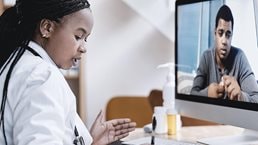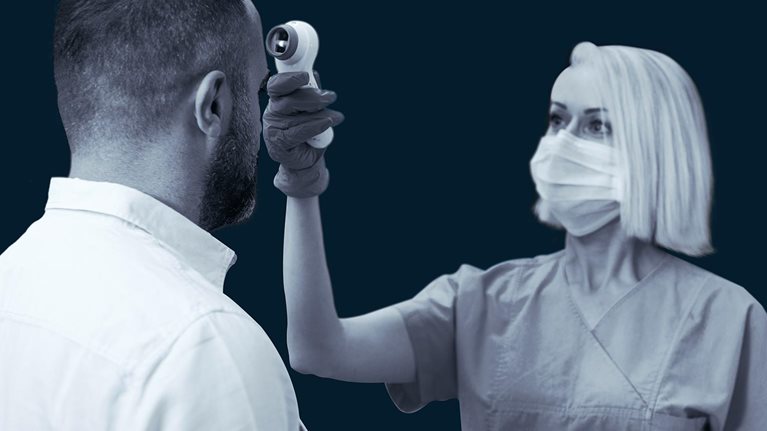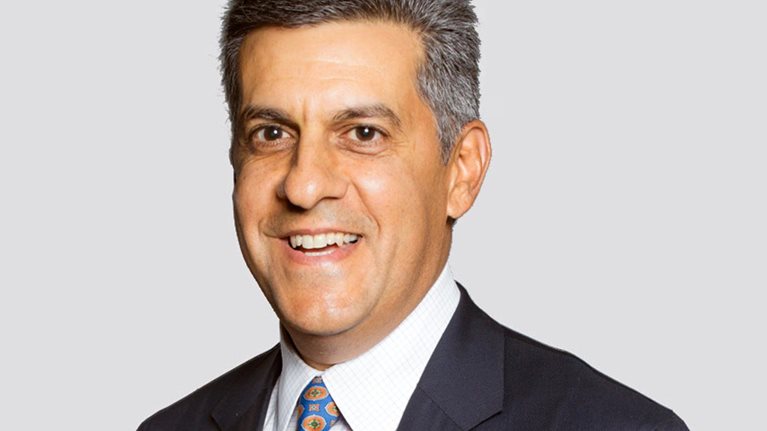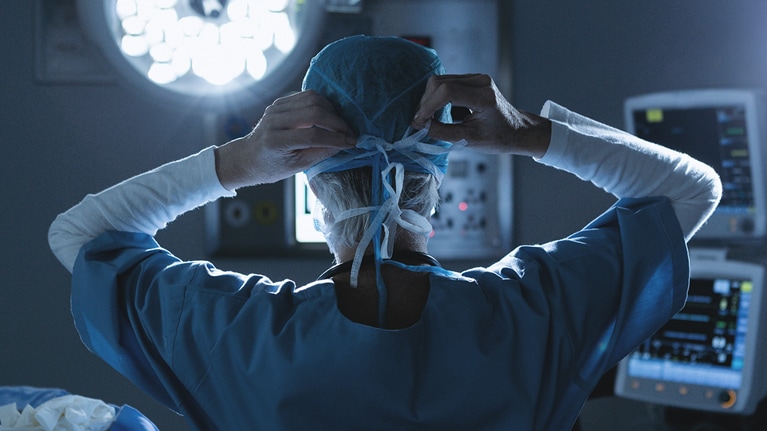Since Bill McKeon joined Texas Medical Center (TMC) in 2013, he has faced challenges that include a Category 4 hurricane and the onslaught of COVID-19. Throughout it all, he said leadership starts by creating a culture that focuses on patients. “I think the most important thing a CEO does is touch everyone on the frontlines, to really understand how they see the world,” he told McKinsey Senior Partner Filipe Barbosa in a recent conversation. An edited and condensed transcript between the two is below.
Filipe Barbosa: Welcome to the McKinsey on Healthcare podcast. My name is Filipe Barbosa. I’m a senior partner at the McKinsey & Company offices in Houston, and I’m enormously privileged today to speak with Bill McKeon, the president and CEO of the Texas Medical Center. I would love to start the conversation with you letting our audience know a little bit about Texas Medical Center, and how you are transforming healthcare.
Bill McKeon: What’s unique about the Texas Medical Center is the name itself: it’s actually quite misleading. When we all think of medical centers, almost every city around the world has a medical center. TMC is actually a medical city. It’s comprised of over 60 institutions, 120,000 employees, and we provide care to over 10 million patients each year on this main campus.
The GDP for the Texas Medical Center is over $22 billion, which would make us the eighth-largest business district in the United States. So, it’s unlike anything I’ve ever seen in my world travels, and certainly in the United States.
Filipe Barbosa: How would you say it is helping to transform healthcare in the United States?
Bill McKeon: The medical center has drawn people here from all around the world for hearts, procedures on brains, cancer, number one cancer center in the world at MD Anderson (located within TMC). It’s the largest Children’s Hospital in the world.
Second part—and what many people don’t realize—is our research capabilities. More research is done in this campus than anywhere in the world, so people don’t come here just to be clinicians. They come here to produce some breakthrough research, and so much of the research of many of the drugs that are discovered happens on this campus. Many of the surgical procedures that we’ve learned have been developed on this campus; so that’s been really exciting for us.
Filipe Barbosa: Bill, you joined the Texas Medical Center in 2013, when the TMC had a very different role with its member institutions. How would you describe the landscape you faced back then?
Bill McKeon: When I came in and found the organization, the Texas Medical Center Corporation, which serves as the umbrella for this medical city, I saw that it was largely focused on infrastructure, physical infrastructure, so, many of the things it touted when I arrived here were that it had the largest parking operation in North America, it had the largest laundry, the largest chilled water and steam facility. It managed over 10 miles of streets, and security across 1,400 acres. So, in each one of those examples, it was always about physical infrastructure. And I thought there is so much more for this organization to do, that is, to drive many of the programmatic opportunities across this medical center.
Want to subscribe to McKinsey on Healthcare?
Filipe Barbosa: Tell us a little bit about what you’ve achieved as an organization, and then more importantly the vision and the plans for the Texas Medical Center, which are so energizing.
Bill McKeon: We really thought, unless we can be world class in what we’re doing and operating, we’re going to bring partners in to help us do that. So that was the first two or three years of my time here, really getting the operational machinery working well. And that grew our margins, which allowed us to invest into other areas, so, one of the first areas that we focused on was innovation.
Clinical research was another huge opportunity. We conduct more clinical trials on this campus than are conducted anywhere in the United States, yet we do it independently. TMC has 32 IRBs, or institutional review boards, that help each institution conduct independent clinical research trials.
And so now we’re investing in putting artificial intelligence into each of those institutions, so we have a common toolset to actually look across the 10 million patients rather than have each institution look at them independently. Health data was huge. But that was a huge opportunity for us to really think about this: How do we pull together the data and standardize it across the entire platform, across the entire medical center, and really look at it? And it became kind of the true North for us during the COVID-19 pandemic, so health data is a really important opportunity. It’s becoming a magnet for industry to work side by side with our leaders.
Filipe Barbosa: Ultimately, the work you have been doing with the Texas Medical Center, and the changes you’ve been making, are driven by leadership. Can you talk to us about your leadership journey?
Bill McKeon: When I look back, most of my professional life has been spent outside of the United States and that experience has taught me a lot about leadership. What I’ve learned is a leadership style that works in the United States may not work in London. The basic principles that we think about in leadership—work ethic, in-depth analysis of a business, understanding of value proposition, product differentiation—are solid fundamentals. But actually understanding what motivates people is very different in different parts of the world.
You always want to hire incredibly talented people. And that’s something that I’ve invested heavily in. I think I’m most proud of hiring a real great group of people that are leaders in themselves, and they’re growing, and many times don’t know even how smart and creative they are. And that’s one of the greatest pleasures of leading: hiring people and curating our future leaders here at the medical center.
Filipe Barbosa: When you reflect back on your career, what is the one piece of advice you give to some of the global leaders that are listening here?
Bill McKeon: It probably is not what you would expect in my answer, because what I’ve learned is that leaders get caught up with thinking about themselves as executives, and the more that you can take yourself down into the bowels of each organization and really walk it, and see it, to see how people deliver a service, to see how they answer phones, the better leader you’ll be.
The most important people in the organization are the ones that have the most touchpoints with customers, and you’ve probably heard this many times before, but if those people aren’t extremely valued, as they should be in an organization, and the culture doesn’t reinforce that, then your company is missing its greatest opportunity.
Setting a culture starts at the top. It relies on the way in which you treat people, the way in which you are curious and talk to them about their jobs, and those conversations can’t be done from an executive office. You’ve got to be able to walk through and touch all the points throughout the organization. I often think CEOs try to behave like CEOs and think they must be above those touchpoints, and, really, it’s just the opposite.
I think the most important thing that a CEO does is touch everyone on the frontlines, to really understand how they see the world, how they see the culture of the company, and build up from that base, because that’s when you really learn about the business. And I find too often CEOs put too many layers between them and the frontlines that are delivering a service or a product, and they lose the real beauty of the organization. So that’s my advice to CEOs: de-layer as much as you possibly can, get as close to the frontlines of business, and make sure the people on those frontlines are treated as well as any other person in the executive suite.
And they will know a culture, you can’t fake it. It’s not something that you put on the wall in a coffee room. It’s what you live every day. And so how you conduct yourself and how you treat people that would consider themselves on the lowest levels are certainly not the lowest level of importance. They should be almost in an inverse relationship to those people on the frontlines, and that’s where you build a culture, and it’s got to be something that’s inclusive of all people in the company, and it takes time. If you don’t have a great culture, that company will never perform admirably.
Filipe Barbosa: Maybe pivoting the conversation a little bit now and getting on to COVID-19 and the devastating virus. Let’s go back to February 2020, when this is all breaking, and walk me through how this diverse group of healthcare and local leaders was formed.

How COVID-19 has changed the way US consumers think about healthcare
Bill McKeon: It was only realistic that it would eventually come to the United States and so we didn’t waste any time.
We called a meeting of the top CEOs of the medical center, the mayor came, and so I hosted it in our boardroom, and it was really clear then that we didn’t have any time to waste in preparation. There was no construct for us to come together and work as one unified organization on a process like this. Hurricane Harvey is an example where we’d come together, but this pandemic was very different. You know, floods come and go in weeks, and a pandemic, as you see, we’re now a year and a half into it and we’re still very much in the thick of it here. Things are getting better, but I remember at that time hosting this group and saying we need to come together on the knowledge of this virus—at the time it was only one—and how we’re going to handle it. We have to come together on supply chain. We’ve got to pull our data to establish a mechanism in which we could collect and standardize the data and do it on a day-by-day basis.
Supply chain was nonexistent, so now everyone was on their own to try to negotiate. I know this now, because these meetings with the CEOs went seven days a week. Seven AM, seven days a week, and that actually led to a secondary meeting of all the top leadership from the City of Houston and the county and TMC at 8:00 AM.
We did this every day, seven days a week, and the data was collected in real time, unlike other data sources that states were trying to roll up. No one realized the effect of this virus and the presence of it on a day-by-day basis. The states looking at it were sometimes four-to-six weeks behind on the data, which would really have made it impossible to make daily decisions, so we became the true North relative to data and understanding it and we published and circulated it, because it was in demand.
We circulated the data to the governor, to the mayor, to the county judges, to the public. I remember every night we would get the last piece of data. About 2:00 AM I’d send it around. About 3:00 AM, people would read it first thing in the morning and we would have our meeting at 7:00 AM and make strategic decisions.
One hospital would be out of supplies and we’d shift supplies from one to another, or I’d be writing a check for several million dollars to purchase more supplies from around the world, and it became one of our greatest moments, I would say, in our history, coming together because none of us could have done this by ourselves. And we needed to pull together as a collective entity to really look at this and make decisions. And we were looked upon by our community as giving them the real up-to-date daily view of the presence of this virus through the early days. Through testing we looked at the prevalence. We even have wastewater management sites, 39 of them around the city, where we actually test wastewater. And we can tell you the presence of the virus or how many, now multiple viruses, are in our community.
It was a moment in time, and now has been a year and a half of time, where we have dedicated a huge amount of resources. And I don’t see any end to it for some time, sadly, because of the resistance of many to get vaccinated. So we still have this presence in our community and will for some time. The fight goes on, but it’s been a very proud moment in history for the Texas Medical Center.
Filipe Barbosa: Yes, it was an amazing collaboration between healthcare, local government, academia, the greater Houston partnership, and business, in one of the most diverse cities in the country, if not the most diverse big city.
Social capital is such an important concept in leadership. What would you say were the key learnings that you gained from this pandemic about the value of social capital?
Bill McKeon: I think the heart of social capital are those links and shared values and understanding that enabled people to trust one another. That’s the cornerstone of you do work together and that really took for us, because remember, each of these institutions worked independently of one another, they don’t usually share data with one another, and so that was a real big accomplishment for us to convince them to give the data to the Texas Medical Center at the time.
And that trust opened the door for many other opportunities of understanding, because we needed that data in real time to know how things were unfolding. People really didn’t understand the depth of this problem and so I think what this collaboration allowed us to do, when each of those institutions trusted themselves enough to give their data to us centrally, was to see the benefits of working together, and that set a whole new tone for how we work together.
A lot of people forget during this pandemic that our hospitals are usually at 80 to 90 percent capacity for just the normal challenges disease brings on in our community, and people travel from around the world to come here for that care. So we had those responsibilities on top of the pandemic. But one of the things about social capital is that once we established that baseline trust to really work with each other, it was amazing to see how we could talk collectively about, for example, how to set up the testing, because, you remember, when testing was first mandated, our hospitals were already taxed with not only providing care for non-COVID-19 patients, but now for COVID-19 patients, so we became the cornerstone for testing in the entire country. And it was the great efforts and investments made by Baylor College of Medicine, the University of Texas, and Houston Methodist that gave us a testing capacity so we could know in real time how many people were coming in with the COVID-19 virus. Only a year ago, we’d have to wait for those tests to go to Washington and come back six weeks later.
And so we had to have the real-time intelligence to know where this virus was and how prevalent it was in various communities. Now we’ve shifted to knowing where the hotspots are, and we’ve shifted our mobile units to where we can deliver vaccine. We test more heavily in certain areas because we know the virus presence is greater. So all of those tools we’ve put together and shared with one another. The sharing of real-time intelligence made all the difference in this success of our battle with this pandemic.
Filipe Barbosa: What is your vision for the Texas Medical Center over the next ten years?
Bill McKeon: If I try to synthesize it into a statement, I think that what we’re creating here is the most efficient comprehensive ecosystem to translate discovery into advancing human care, and that’s quite a statement. But we already had the largest set of minds here that are researching advances in care and also practicing them every day.
But we didn’t yet have all the pieces together. We have clinical. We have research. We didn’t really have the investments here. We didn’t have industry here and we also didn’t have manufacture here. And so those three areas are where we’re putting our full court press, if you will. We’re putting our investments into building out this new TMC Three campus, this 40-acre campus, and it’s already underway. So every day I’m watching cranes go up and buildings come up. And that’s very exciting.
We have all of our industry leaders in research here on this campus; they are actually designing their labs together, which is really exciting, rather than independently from one another. We’ve got industry and are building buildings for industry that will be side-by-side with our researchers, so that’s terribly exciting. We have huge investment coming in from industry. We’re building out an entire park system. There is six parks in the middle, each one larger than a football pitch, so the greening of our new campus is really exciting and an important part of all this effort. Equally as important as the labs we build is a manufacturing campus that will be able to house all of the things that we needed in this pandemic, so in the future we don’t have to rely on other countries that obviously need to take care of their own. We want to have that capability within the United States and we want to have it here in mid-country, as we call it in Texas, so perfectly located to do supply chain to both the East and West coasts. Those are big audacious Texas goals, but they’re ones that were already underway. But we’re not waiting. We believe in our ability to execute on these plans, and we have the entire medical center arm-in-arm together in this vision, so it’s not my vision alone. It’s really a shared collective vision across the entire Texas Medical Center.
The views and opinions expressed are those of the interviewee and are not necessarily those of McKinsey & Company.


